EU Leaders Called Out For Lackluster Climate Change Package
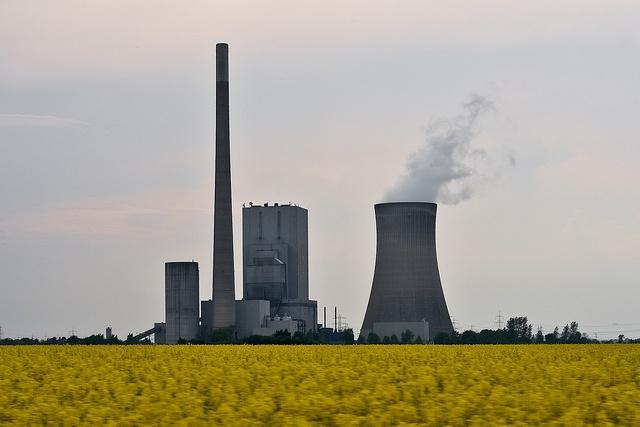

European leaders agreed to reduce greenhouse gases by 40 percent by 2030. Two targets of 27 percent were also agreed on: one for the market share of renewable energy and another for energy efficiency improvement. The renewable energy target is binding on all EU member countries, but the energy efficiency target is optional.
“This 2030 package is very good news for our fight against climate change,” said President of the European Commission Jose Barroso in a statement. “No player in the world is as ambitious as the EU.”
Environmentalists are not very happy with the EU’s targets. “It is clear that all of the targets could have been – and should have been – more ambitious,” said Jennifer Morgan, director of climate and energy programs at the World Resources Institute. Morgan cites recent analysis that shows the EU can reduce carbon emissions by 49 percent by cutting natural gas imports in half and investing in renewable energy and energy efficiency.
Greenpeace EU Managing Director Mahi Sideridou said that what the “EU is offering is, at best, a whiff of smelling salts.” She said that Europeans “want cleaner energy.” A poll by Eurobarometer, published in March, found that 92 percent of Europeans think it’s important for their government to provide support for improving energy efficiency, and 90 percent think it is important for the government to set renewable energy targets.
Natalia Alonso, Oxfam’s deputy director of advocacy and campaigns, calls the 40 percent emissions reduction target a “only a first step.” Alonso points out that “business leaders called for higher -- and binding -- targets than those agreed by EU leaders.” Alonso is right that business leaders across Europe have called for tougher targets than EU leaders. A letter by 11 big European companies called on EU leaders to agree on a climate and energy package that goes “well beyond the proposed 40 percent reduction.” They also called on leaders to agree on a renewable energy target of at least 40 percent and a binding energy target of at least 40 percent.
Meanwhile, the European Trade Union Confederation (ETUC) called for a 30 percent renewable energy target and a binding energy efficiency target of 20 percent. A letter by 49 companies through the European Alliance to Save Energy called on EU leaders to adopt a binding energy efficiency target of at least 40 percent. Still another letter, this one by members of the Prince of Wales’s Corporate Leaders Group, urged EU leaders to adopt a renewable energy target of 30 percent and a binding energy efficiency target of 30 percent. They also called on EU leaders to adopt an 80 to 95 GHG emissions reduction by 2050 target.
Why did EU leaders disregard the advice of business leaders across Europe? Perhaps it was pressure from fossil fuel companies. An Oxfam report found that fossil fuel companies spent over €44 million last year lobbying the EU to stop action on climate change.
Image credit: Martin
How to Create an Action Plan for B Corp Certification
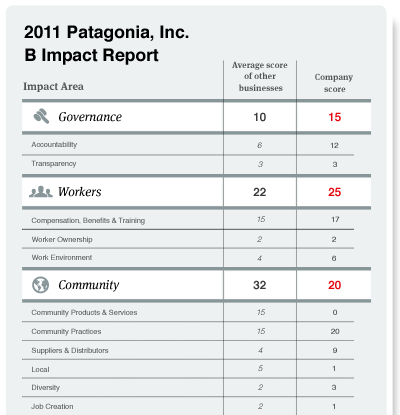

This is the twelfth in a weekly series of excerpts from the new book "The B Corp Handbook: How to Use Business as a Force for Good" (Berrett-Koehler Publishers, October 13, 2014). Click here to read the rest of the series.
By Ryan Honeyman
Welcome to week three of the six-week, turbocharged Quick Start Guide to becoming a Certified B Corporation.
Week one focused on getting a baseline assessment of your social and environmental performance, and week two focused on motivating your team towards B Corp certification.
Week Three: Create an action plan
Time estimate: One to three hoursOBJECTIVE: After you have identified your core project team, work with them to set a target B Impact Score and create an action plan with short-, medium- and long-term goals. For example, if you started out with a score of 53, see whether you can implement enough practices to earn an additional 10 points by the end of this six-week Quick Start Guide.
END RESULT: An action plan with specific people assigned to take the lead on each question, a target B Impact Score, and a rough timeline for completion. 1. Use the improvement tools
Show your team the 'Improve Your Impact' section of the B Impact Assessment. This will contain your 'Revisit This' report, to help them see which questions you marked for follow-up on your initial pass; a customized improvement report, which will help you decide where you want to focus your efforts (based on impact area, question difficulty and question weighting); and a library of best practice guides, which will provide more detailed instructions on implementing certain practices.
2. Prioritize by difficulty
You can organize the data in the improvement report in many different ways. Initially, I suggest sorting the questions based on difficulty. Make a plan to tackle the easy- and medium-difficulty questions first. Figure out what kind of data you need in order to make progress on the assessment.
3. Delegate responsibility
For example, your human resources manager might take the lead on figuring out how to implement a job-sharing program, and your COO might start gathering data on the environmental practices of your suppliers.
4. Talk to B Lab
B Lab’s staff members are available to review your assessment, answer your questions and give you advice on how to improve your score -- even if you are not seeking B Corp certification. I strongly encourage you to take advantage of this opportunity.
5. Submit your assessment
An assessment review is a key part of the B Corp certification process. On this call, B Lab’s staff will review each of your responses with you. The goal is to give you a better understanding of the intent behind each question and an idea of what it would take to implement that practice. Most businesses find that they make adjustments to their answers after they receive clarification from a B Lab staff member. Any representative of your company (e.g., an executive, an associate or an intern) can complete this assessment review call.
Ryan's Tip: I encourage you to use the 'Improve Your Impact' report to identify the point value of the different questions on the B Impact Assessment. If it would take a lot of time and effort to earn points on a particular question, make sure it is worthwhile to undertake this. If it is not, then click on 'Not Tracked/Unknown' and move on. Your total score on the assessment may not be as high, but you will keep your momentum. It is not worth bending over backward to answer every question and identify every piece of data.
Coming next week: Week Four: Implement Your Improvements
Image credit: B Lab
Ryan Honeyman is a sustainability consultant, executive coach, keynote speaker, and author of The B Corp Handbook: How to Use Business as a Force for Good. Ryan helps businesses save money, improve employee satisfaction, and increase brand value by helping them maximize the value of their sustainability efforts, including helping companies certify and thrive as B Corps. His clients include Ben & Jerry’s, Klean Kanteen, Nutiva, McEvoy Ranch, Opticos Design, CleanWell, Exygy, and the Filene Research Institute.
To get exclusive updates and free resources about the B Corp movement, sign up for Ryan’s monthly newsletter. You can also visit honeymanconsulting.com or follow Ryan on Twitter:@honeymanconsult.
Cloud Service Promises Unparalleled PV Performance Tracking
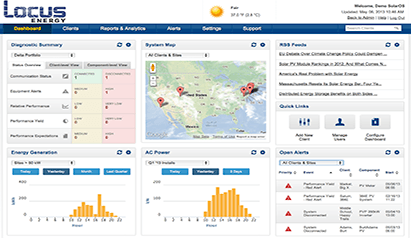

Intense competition has driven the costs of manufacturing solar photovoltaic (PV) cells and modules down sharply in just a few short years. That's led downstream solar industry participants to focus on reducing solar's 'soft' and balance-of-system costs. Some innovative solar energy sector participants see great promise in eking out and amassing small gains in efficiency -- gains that can that collectively make a big difference to commercial and utility-scale PV system operators, as well as consumers.
Locus Energy, the developer of an enterprise-class, cloud-based software-as-a-service (SaaS) platform that's said to provide operators unprecedented data collection, analytics and reporting capabilities, is offering just such a solution. On Oct. 22, Locus announced that Swinerton Renewable Energy will make use of its SolarNOC and PVIQ analytics suite to optimize the management of its portfolio of solar PV assets.
Leveraging public and proprietary data sets gleaned from satellites and on-site sensors, Locus is able to provide its users actionable data on the performance of PV systems at a much greater level of geographic resolution and analytic detail than has ever been possible -- remotely or on-site. That, in turn, enables the company to identify and account for the factors that lead to divergences in forecast and actual performance of solar PV systems -- whether distributed, commercial or of utility-scale -- and take action to remedy them, Adrian De Luca, Locus Energy's vice president of sales and marketing, explained to 3p in an interview.
Enhancing the performance of PV assets
The enhanced PV asset monitoring, data collection and analytics Locus's SolarNOC and PVIQ provides can make a big difference when it comes to optimizing the performance of PV systems, De Luca told 3p.
In addition to providing solar PV system managers more powerful monitoring, data gathering and analytic capabilities, one of PVIQ's three modules enables them to automate performance reporting to meet the needs of all participants involved in any given solar PV power generation system. That includes banks, investors and insurers, as well as equity investors and operations and maintenance providers.
Locus Energy's PVIQ incorporates data gathered from approximately 50,000 solar PV monitoring systems across North America. As an independent developer and vendor of a Web-based solar analytics platform, Locus has been able to amass the most extensive and comprehensive database relevant to monitoring and evaluation of PV systems' performance in North America, De Luca told 3p.
Leveraging "Big Data" analytics
In addition to solar irradiation levels, the Locus platform's solar PV monitoring capabilities provide current data on a range of pertinent weather and atmospheric condition metrics, such as cloud cover, at much greater resolution than can be obtained from NOAA and NASA data sets, or those of competitors, De Luca continued. Similarly, Locus Energy is working to expand the range of the historical data sets included in its cloud-based platform and application offerings.
That has given Locus the edge needed to acquire a large and diverse set of customers that include solar PV equipment manufacturers, as well as solar farm owners, operators and investors, he added. Along with its large customer base, Locus Energy's cloud-based, SaaS delivery model affords the Hoboken, New Jersey-based company the ability to compete on price, as well as the range and quality of the products and services it offers.
Locus's PVIQ consists of three elements:
- Virtual Irradiance (VI);
- the Waterfall performance report; and
- a spreadsheet program plug-in.
As Locus explains, "VI uses satellite and weather data to provide highly accurate ground-level irradiance data in 15-minute increments with coverage across the contiguous U.S." The Waterfall performance report, in turn, "assesses the drivers behind under-performance, including factors such as inverter malfunction, shading and soiling."
PVIQ's third element is plug-in software that allows operators to access the Locus database directly from an Excel spreadsheet. That, the company explains, "dramatically reduces the time required to prepare periodic performance reports.
Managing solar PV asset fleets
All of these elements and attributes, as well as being cloud-based and delivered as SaaS, contributed to Swinerton Renewable Energy's decision to make use of Locus Energy's SolarNOC and PVIQ suite to manage its entire fleet of PV assets.
“Locus is uniquely positioned to provide the most advanced monitoring and analytics solutions across all segments of the PV market, at scale,” Angelo Purpuras, Swinerton's manager of technical services, was quoted as saying. “The use of the SolarNOC to manage our fleet provides our technicians with unprecedented data visibility, and the PVIQ analytics will help us to continue providing premium O&M services to our customers.”
San Francisco-based Swinerton's PV portfolio encompasses more than 400 megawatts of rated renewable power generation capacity. Another 600 MW is now under construction.
"Swinerton will use Locus's SolarNOC and PVIQ in tandem with its own SOLV solution to provide best-in-class monitoring, analytics, and O&M (operations and maintenance) services for both its utility-scale and commercial fleet customers," the two companies explain in a press release.
"By leveraging Locus Energy’s web-based SolarNOC software as part of the SOLV solution, Swinerton’s fleet operators will be able to more efficiently organize and assess performance data over a diverse set of solar PV assets spread across a wide geographical area, as well as streamline O&M workflows," the companies elaborated.
"In addition, Locus Energy has expanded its data acquisition and presentation capabilities, enabling Swinerton to integrate data from its industry-leading SCADA (Supervisory Control and Data Acquisition) system."
*All images courtesy Locus Energy
Adobe Corporate Responsibility Zeros in on Social Impact


Adobe recently released its most recent corporate responsibility report, which is chock full of data on where the $4.1 billion Silicon Valley software giant made headway on environmental, diversity and governance issues. The recent overall focus for Adobe, however, is on how the company believes it can make an impact on society, especially youth. Other companies in the information technology space, including SAP and Microsoft, have made massive commitments in money, resources and employees to youth employment and empowerment programs.
Adobe, however, takes a slightly different approach. To learn a more about how Adobe’s corporate responsibility stands out within an industry where a lot of progress has been made, I spoke with Michelle Crozier Yates, Adobe’s director of corporate responsibility.
“Of course it makes perfect sense for companies to leverage their core competencies to help the education sector,” said Yates as we started our talk.
Many technology companies donate copious licenses of their products to help youth burnish their skills and stand out in a hyper-competitive 21st century economy. But Yates insisted that rather than focusing on developing future users of their products, the company is really determined to make a difference with its social impact programs. “So, if you want to learn more about video, we want to offer young people the opportunity to develop their social skills, but we don’t require that they use Adobe products,” Yates continued.
One way Adobe tries to ensure its social impact programs succeed is by how they are structured. Going on nine years, the funds for these programs come from the Adobe Foundation, a nonprofit entity the company created to conceptualize, plan and operate these programs. Adobe donates 1 percent of its pre-tax profits to the foundation. In 2013, that turned out to be $58 million that funded grants for education and community development, donations of Adobe products, and employee volunteer programs. The foundation has no one on the payroll; Yates and her staff of 16 run its programs while on the job.
One of the more compelling initiatives that come under the Adobe Foundation’s umbrella is Adobe Youth Voices. The digital media learning site was accessed by more than 33,000 people globally in 2013. It was actually exciting to hear Yates become more animated as she described this program. In a nutshell, Adobe Voices seeks to “harness creative skills to solve problems.” Considering the fact that the U.S. education system is so focused on test scores, it was also refreshing to hear someone at a tech company talk about creativity — and not appear concerned about how to measure the program’s results.
After all, creativity is a pretty loaded term: You can measure carbon emissions, water saved, number of students enrolled in a skills training program and volunteer hours. Companies have to account for their donations of time and resources to their stakeholders, and that is especially true of public companies. But Yates described Adobe Voices as an ongoing experiment, full of initiatives trying to find the best ways to motivate youth. “What we’re trying to get at is to learn what motivates students, how to get them inspired about social issues, and what they want to change in their lives and communities,” Yates said as we wrapped up our talk. “We’re not teaching them ‘creativity,’ but offering them the skills and resources so they can express themselves.”
The American education system is a lot like its construction industry — applying 19th century technologies and ways of thinking in a modern world. Youth are learning and incorporating information way differently than a generation ago, but educators are still overall tone-deaf to what is going on in homes, neighborhoods and classrooms. Companies like Adobe are filling a void, giving students — especially those who are underserved — a reason to go to class and a reason to think about their future. The stubborn fact is that how we learn, for better or for worse, is changing; we need companies like Adobe to help fill the gaps where schools are falling short.
To learn more about Michelle Crozier Yates and her work at Adobe, read last year’s interview filed by fellow 3p writer Andrea Newell.
Image credit: Adobe
After a year in the Middle East and Latin America, Leon Kaye is based in California again. Follow him on Instagram and Twitter. Other thoughts of his are on his site, greengopost.com.
Disruptive Sustainability: How to Be a Transformational Leader
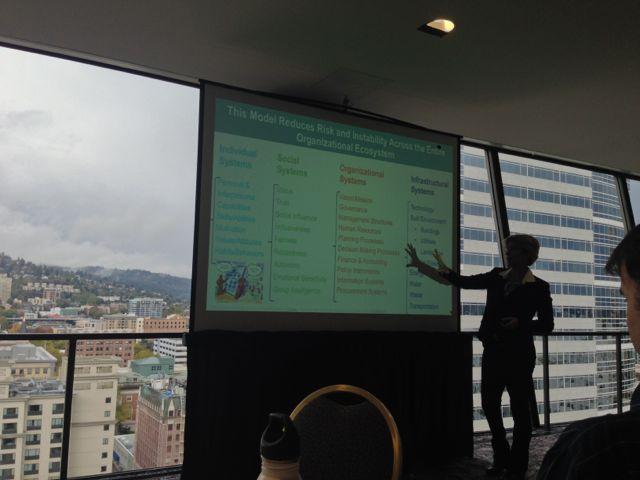

By Deborah Fleischer
The Association for the Advancement of Sustainability in Higher Education (AASHE) conference got off with a bang on Sunday, with pre-conference workshops and a keynote by Annie Leonard, of the Story of Stuff acclaim, who is now Executive Director of Greenpeace (more on Annie’s comments tomorrow). More than 2,000 sustainability professionals and higher education leaders have gathered in Portland around the AASHE mission to “inspire and catalyze higher education to lead the global sustainability transformation.”
I joined over 30 sustainability leaders for Disruptive Sustainability, an inspiring pre-conference workshop led by Leith Sharp, director of executive education for sustainability leadership at Harvard University's Center for Health and the Global Environment. A key theme that ran through Sharp’s and Leonard’s comments: We need to go beyond slowing down and 'doing less bad' to real transformation. And the key to getting there, according to these two women leaders, is to adopt a new, more engaging and more collaborative leadership style. Both share a hopeful, positive vision for the future. “A better world is possible and inevitable,” said Leonard. Both stress that change is hard. And both offered concrete tips and tools, targeted to higher education but also applicable to business.
Install an Emergence Operating System
Sharp’s key message was that being a change leader in a command and control, top down, hierarchy is a thankless, exhausting task. “Management-driven hierarchy (or command and control) alone is inadequate for the task of leading significant amounts of change and innovation,” stressed Sharp. Her solution to this is to add a new operating system that is “aligned around shared purpose," referred to as the Emergence Operating System or EOS.
Qualities that Sharp uses to describe an EOS include:
- Responsible
- Agile
- Energized by relationships
- Action-based learning
- Pilot projects
- Creativity from unexpected connections
The model is not suggesting that you replace the command and control style operation system, but that you obtain senior leadership sponsorship to “install” an EOS that works side-by-side the command and control system. Sharp stressed, “Everything becomes possible when both types of operating system work together for a shared purpose.”
Her argument is that top-down efforts typically only go three-layers deep within a management hierarchy before they lose effectiveness. Yet, bottom-up efforts rarely succeed to transform an organization. A clear decision-making process and engaged senior leadership, along with pilot projects that empower and engage employees, is a formula that will lead to more insights, connection and, ultimately, a transformation to a more sustainable future, Sharp said. She acknowledges this is not easy work. In a video clip of her in conversation with Marshall Ganz, senior lecturer in public policy for the Harvard Kennedy School, Ganz stressed, “No one said transformational leadership was easy.”
Connecting the two operating systems
Another key takeaway was a message from Mary Spilde, president of Lane Community College, who commented: “Don’t wait for your president’s support. You can start without it.”
She was not advising to go about creating change as a lone ranger, but to look across your organization for other allies and to convene conversations about what is possible and what they care about. Spilde added the concepts of emotional Intelligence and wellness to the mix, suggesting we will take solutions to scale by working together, harnessing collective intelligence, making time for self care, and focusing on connections.
Dr. Denice Wardrop, sustainability director for the Penn State Sustainability Institute, shared some real-world stories about implementing the concepts at Penn State. “My job is to connect the two operating systems and work between them.” She also invoked the work of Ronald Heifetz, founding director of the Center for Public Leadership, who advocates stepping back to gain perspective on the bigger system you are part of. “Ask a senior leader to describe to you what they see,” to gain insights into how they see the system.
The day also included time in small groups, where participants got the chance to explore how these concepts relate to their day-to-day work and institutional realities. As sustainability managers from across the country shared, it struck me that there are many opportunities to integrate EOS: hiring, employee orientation, meetings, curriculum, strategic planning and projects (including pilots). It might not be easy, but stretching our leadership strategically might be more fun, fulfilling and impactful than exhausting ourselves by swimming upstream.
What kind of change maker are you?
I get to interview Leonard tomorrow, so more on her comments later. In the meantime, check out the Story of Stuff quiz to determine what kind of change maker you are HERE. According to the quiz, I’m a networker.
Images credits: 1) and 2) courtesy of Leith Sharp; 3) The Story of Stuff
Deborah Fleischer is founder and president of Green Impact, a strategic sustainability consulting practice that helps companies walk the green talk.
More Brands Join Responsible Down Standard


More companies are changing their tone towards animal rights as organizations from the Humane Society to PETA are highlighting what is going in the products you eat and fashion you wear. The Responsible Down Standard (RDS), which has raised awareness about what is happening to geese as their down is harvested for winter apparel and bedding, is one of the more recent initiatives underway. Allied Feather & Down is currently the largest RDS-certified supplier on the market, and this year it has made several industry moves. The latest is its announcement that 10 brands are now sourcing the company’s down, including The North Face and Eddie Bauer.
Why is this important? Previous responsible sourcing efforts were opaque and did little to assuage animal rights activists who questioned the “responsible down” that companies were sourcing for everything from jackets to comforters. The new RDS guidelines, which The North Face was instrumental in drafting, are a more open process. The collection of down is not exactly the most humane process — abuses from force feeding to overcrowding were a constant complaint. With much of the world’s down supply coming from Eastern Asia and China, a global standard that could apply to factory audits anywhere and allow for seamless supply chain traceability were both needed.
The other companies that have committed to sourcing RDS-certified down include Down & Feather Co., Down Linens, Helly Hansen, Mammut, Marmot, Montane, Nau and Outdoor Research. These firms have committed to including more responsibly sourced down in their 2015 product lines. The conversion to all-RDS down, if it ever occurs, will take several years. The North Face, for example, has committed to 30 percent down from RDS-certified sources by 2015 and says it will aim for 100 percent RDS materials by 2017.
According to Allied Feather & Down, it has taken the lead with The North Face, Eddie Bauer and its other partners by offering seminars and educational materials to broaden industry knowledge about what is, and what is not, responsibly sourced down. For now the vast majority of participating companies are within the outdoor apparel industry, but the goal is to include more bedding manufacturers as well as score participation from the hospitality industry.
Whether these new standards will satisfy the apparel industry’s critics remains to be seen. Statistics on how down is collected, whether they are from live plucking or simply collecting the by-products of waterfowl slaughtered for meat production are all over the map. Industry associations claim live-plucking is increasingly rare; a Swedish documentary several years back claimed the rate was high. But for consumers who want their products to be “cruelty-free,” the RDS and its parent organization, Textile Exchange, still have a lot of work ahead of them. Those focused on animal welfare and are still dubious still have an alternative—apparel and bedding made with synthetic materials.
Image credit: Allied Feather & Down
After a year in the Middle East and Latin America, Leon Kaye is based in California again. Follow him on Instagram and Twitter. Other thoughts of his are on his site, greengopost.com.
The North Face and Dept. of Interior Partner to Protect Public Lands


Public lands like Golden Gate National Recreation Area in California and Everglades National Park in Florida are national treasures that need to be protected. The outdoor company The North Face and the Department of the Interior recently announced a joint partnership to protect and preserve public lands. The joint partnership supports the 21st Century Conservation Science Corps (21CSC) which began in 2010 as part of the Obama administration’s America’s Great Outdoors program. The North Face also announced it is donating $250,000 to the 21CSC.
The company also launched a new commercial campaign, featuring footage of The North Face global athlete team members skiing, running, climbing and hiking. The commercial launched on YouTube on Oct. 27 and will hit national television during NBC Sunday Night Football on Nov. 9 . It will run through the end of December on other channels, including ESPN, USA Network and Comedy Central. The commercial will also be featured on digital and social channels such as Hulu and Facebook beginning Nov. 10.
“This partnership with The North Face and My Morning Jacket is really about inspiring and preparing the next generation of conservation leaders and outdoor stewards,” said Secretary of the Interior Sally Jewell. “The funding will help put young people and veterans to work restoring and protecting our nation’s land, water and wildlife – whether that’s building trails in national parks or removing invasive species in national wildlife refuges.”“We are extremely proud to raise awareness, support the 21CSC and motivate people to reimagine exploration in their own lives,” added The North Face President Todd Spaletto.
Additionally, the company is partnering with Outside magazine to create a list of 50 places to explore across the U.S. The campaign encourages people to take a photo of themselves visiting those places and share them on social networks using the hashtag #SeeForYourself. The joint campaign on Outside’s website features a cover of Woody Guthrie’s song “This Land Is Your Land” by two-time Grammy nominee My Morning Jacket, available through iTunes. More than half the proceeds of each download will go to 21CSC.
As part of the campaign, The North Face outfitted a trailer to visit retail locations across the nation. Consumers will have a chance to win prizes, including gear. During the week of Oct. 27, The North Face “#SeeForYourself” Taxi will drive through New York City streets and offer an adventure to those who accept the offer immediately. When unsuspecting riders hail a taxi, they will receive a message offering them a chance for an adventure. They will be taken to one of three secret locations just outside the city, and The North Face athletes will lead them in an excursion.
Image credit: Frank Schulenberg
Green Communities are Empowered Communities: Reflections from SXSW Eco


This post is part of Triple Pundit’s ongoing coverage of the SXSW Eco conference. For the rest, please visit our SXSW Eco page here.
By Angela Mason
During the first week of October, nearly 3,000 people gathered in Austin, Texas for SXSW Eco. This three-day event brings together representatives from science, industry, education, NGOs, policy and business to “explore, engage and co-create solutions for a sustainable world.” I was proud to participate, alongside Oscar Medina of the Western Institute for Leadership Development, in a green jobs panel moderated by community activism professor, researcher and advocate Raquel Pinderhughes.
During our panel, Green Job Creation: Path to Community Empowerment, we explored a variety of complex topics, drawing out the connections between the diverse programs the three of us oversee and how it all ties back to the opportunities provided by employers in green job sectors. Simply put, a green job is one that contributes to preserving or restoring the quality of the environments in which we live. For example, roles that protect ecosystems, increase resource efficiency, reduce waste or de-carbonize the economy can all be classified as green jobs. My role on the panel centered on how the Chicago Botanic Garden’s urban agriculture program— Windy City Harvest — contributes to community empowerment via green job creation.
Our moderator, Raquel, is the driving force behind Roots of Success: an empowering environmental literacy and job readiness curriculum and certification program that paves the way for underrepresented individuals to secure living wage jobs and improve the health and environmental wellbeing of their communities. Educator Oscar Medina uses the Roots of Success curriculum to share his passion for science and open up new career possibilities for his students at the Western Institute for Leadership Development. The curriculum also underpins the apprenticeship aspect of Windy City Harvest.
Through a variety of programs, Windy City Harvest provides training, transitional jobs and educational pathways to individuals with barriers to employment and increases educational opportunities in Chicago’s underserved neighborhoods. Our graduates go on to related seasonal and full-time work in wholesale distribution, rooftop farms, commercial aquaponics and community farms.
At SXSW Eco, Raquel, Oscar and I discussed our challenges and successes and how training programs need to remain closely aligned with employment partners’ needs and continuously work to ensure the skills we teach are the ones in demand. That demand, however, is a moving target. The concept of a 'green job' is evolving rapidly and differs regionally. To stay on top of this shifting demand landscape, we need to ask the right questions: What does my city have in store for its water system in the next 10 years? What about the waste management, energy and agriculture systems? What skills will be required to transition those systems to greener, more efficient options to better serve communities in the future?
Roots of Success, Windy City Harvest and the Western Institute for Leadership Development, along with like-minded programs all over the country, are preparing participants for the world of work or post-secondary education -- strengthening communities, boosting health and providing opportunities to underserved populations.
SXSW Eco was an inspiring experience for me, and it underscored the need for positive collective action to overcome the challenges our communities and our planet face. As we continue to feel the effects of climate change and the economic downturn, green jobs can play a role in a variety of solutions. As educators, we must continue to focus our efforts on equipping young people and job-seekers with the skills to power a greener economy.
This year’s SXSW Eco conference may be over, but the conversation is just getting started. I hope you’ll take this opportunity to explore our programs, learn more about challenges our participants and communities face, and join us as we work toward solutions!
Image credit: Rebecca Hedges Lyon, courtesy of SXSW Eco
Angela Mason is Director of Urban Agriculture for Chicago Botanic Garden.
The Corporate World Invests in Ebola Fight
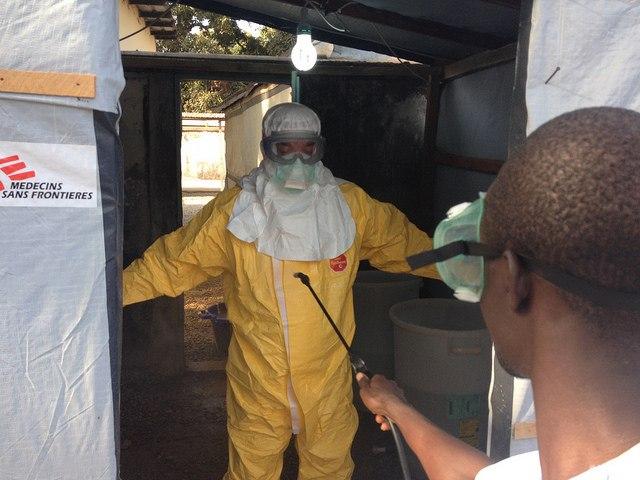

The Ebola virus is one of the deadliest to hit West Africa. The number of Ebola cases in West Africa totaled 9,936 with 4,877 deaths as of Oct. 20. The average death rate is 50 percent, but in past outbreaks the death rate has ranged from 50 to 90 percent. Clearly, West Africa needs help fighting Ebola, and corporate donors are pledging money to help with that fight. Recently, JPMorgan Chase & Co. announced up to $600,000 in donations from its foundation and employees.
Grants of $300,000 from the JPMorgan Chase Foundation will support the United Nations Children's Fund (UNICEF) and the International Rescue Committee in their work to help control the Ebola outbreak. The foundation is also launching an employee giving campaign that will match employee donations dollar-for-dollar. The foundation will double donations made by employees by up to $150,000 for a total of $300,000.
“There is an immediate need for assistance to help prevent Ebola from spreading any further,” said Dalila Wilson-Scott, head of global philanthropy for JPMorgan Chase. “With our support, UNICEF and the IRC will be able to continue responding to the outbreak, helping prevent the disease from spreading and providing social services to West African communities in need.”
Foundations donate to help fight Ebola
Corporate donors with foundations are also pledging big money to fight Ebola. The Bill and Melinda Gates Foundation pledged $50 million to combat Ebola, $2 million of which has been donated to the CDC Foundation. (The rest has been donated to the World Health Organization and UNICEF.) Facebook founder and CEO Mark Zuckerberg and his wife, Dr. Priscilla Chan, gave $25 million to the CDC Foundation from their Silicon Valley Community Foundation. The $25 million donation is more than donations from the governments of China, Canada, Germany and France and is the biggest private donation to the CDC Foundation.
Microsoft co-founder Paul Allen recently pledged $100 million to combat Ebola. Allen created the Humanitarian Aid Worker Medevac Fund and Ebola Medevac Fund to fund the development of two medevac containment units which the U.S. State Department will use to evacuate medical professionals from West Africa. Allen is also partnering with the World Health Organization.
Chocolate companies pledge to fight Ebola
West Africa produces nearly 70 percent of the world's cocoa, and the virus is threatening the world’s cocoa supply. But chocolate companies are also donating to help the region cope with the Ebola outbreak.
Earlier this month, the World Cocoa Foundation announced a $600,000 donation to fight Ebola in West Africa. The money came from member companies in the cocoa and chocolate industry which include Hershey, Mars and Nestle. All of the money went to the International Federation of Red Cross and Red Crescent Societies and Caritas.
Image credit: European Commission DG ECHO
Symantec Pledges to Engage 1M Students in STEM by 2020


Symantec last week released its seventh annual Corporate Responsibility Report, shortly after the software and information management firm announced it would be split into two separate publicly-traded businesses. The report, entitled Transforming to Protect the Future, continues the company’s reputation for a proactive CR approach and includes updated performance goals for the next five years.
The California-based company has been an early adopter of responsible business standards and was a signatory to the 2006 U.N. Global Compact, a set of international principles to protect human rights and ethical working conditions, decrease environmental impact and protect against corruption. The company also joined the U.N. Global Compact LEAD Initiative, a platform for corporate sustainability leadership launched in 2011, as one of just five U.S. companies.
Symantec has grown to dominate the security and data management industries, reaching $6.7 billion in revenue in FY 2014 (ending March 30, 2014), and recently announced the company would be separated into two distinct entities -- a data security and information management business. The company has not yet indicated how this change will affect its CR strategy, but its latest CR report added several new performance goals on workplace diversity, education and supply chain impact over the next five years.
Symantec has built a reputation as a high-performer in the field of workplace diversity and has placed diversity and inclusion among its highest CR priorities. While the company’s gender and race ratios remain highly skewed, this is perhaps more reflective the wider lack of minorities and women in the technology sector as a whole. Of the company’s 20,000 employees, 72 percent are male, and whites are the most highly represented race at 61 percent of the overall workforce, followed by Asians at 25 percent. Nevertheless, the company garnered several awards for its diversity efforts this year, including a spot on Minory Engineer Magazine’s list of its top employers, and it was selected by readers as the “Best Diversity Company” by readers of Diversity/Careers. Symantec also received a perfect score on Human Rights Campaign Corporate Equality Index for the sixth year in a row and was recognized by the HRC as one of the “Best Places to Work for LGBT Equality.” In this year’s report, the company vowed to improve on its existing record, setting a goal of a 15 percent increase over 2014 workplace diversity metrics by 2020.
One way the company is helping to build a stronger employee pipeline for the long-term is through its philanthropic education initiatives. Education accounted for over 40 percent of the its overall donations last year and overall philanthropic giving has steadily increased over the past few years, reaching $28M in FY14, though the bulk of this was in-kind software donations.
In this year’s report, Symantec set a goal to engage one million students in STEM education -- particularly in computer science and cybersecurity -- by 2020 through a $20 million, five-year investment. According to the Symantec, cybersecurity jobs are one of the fastest-growing fields in IT, but there are not enough qualified applicants to fill vacant positions. Earlier this year the firm launched its Cyber Career Connection program, which seeks to train underserved adult populations in the field of cybersecurity and assist them with job placement. The program launches its pilot phase in FY 2015, with an initial group of 45-50 trainees across three cities.
On the environmental front, Symantec appears to be focused on strengthening its responsible sourcing and emissions reductions efforts, though the company has yet to establish and formal greenhouse gas reduction goals. The company has been tracking its GHG emissions since 2008 and has seen minor improvements in the electricity use for its data centers, labs and offices -- the company’s single largest source of GHG emissions. In FY14 emissions from this source decreased about 3 percent compared to the previous year, a change the company attributes to occupying newer, more energy-efficient buildings (over 80 percent of Symantec’s occupied building space is LEED certified). However emissions related to business travel increased 14 percent compared to FY13, resulting in a 3 percent increase in overall GHG emissions to reach 244,000 metric tons of CO2e.
Data centers are one of the largest sources of power consumption for Symantec and similar technology firms, and the company has stated that it will be consolidating and upgrading the efficiency of these centers over the next few years, but no firm targets hav been set. Symantec has joined forces with HP, Facebook and other data center operators to form the Business for Social Responsibility’s Future of Internet Power, a collaborative effort to encourage adoption of sustainable energy sources for power-hungry data centers. Symantec also announced in this year’s report that it will be pursuing Energy Star certification for 100 percent of its hardware products by the end of 2015.
The company is also pushing to reduce the impacts of its hardware supply chain through its commitment to validate all products manufactured for Symantec as “conflict free” minerals by the end of 2017. In some countries, the mining of raw materials such as tin, tantalum, gold and tungsten has been linked to financing for bloody conflicts, especially in the Democratic Republic of Congo. In late 2013, Symantec issued a conflicts mineral policy and has since been tracing its mineral supply chain to its roots, in accordance with US regulations on conflict minerals. While the company has not yet fully mapped the supply pathways for all of its suppliers, it has stated that if any conflict minerals are discovered, it will force suppliers to change their sourcing.
You can view the full Symantec report here.
Image credit: Nicole Honeywill/Unsplash